- Quick Summary
- Shop Online
- Stay on the Outer Aisles
- Check the Unit Price
- Eat Before Shopping to Stick to Your Grocery Budget
- Be Aware of Shrinkflation
- Take a Calculator
- Pay with Cash
- Buy Frozen Vegetables and Frozen Fruit
- Watch Out for "Eye-Level" Groceries
- Don't Buy at the Convenience Store
- Don’t Fall for Grouping
- Buy Generic, Store Brands That Cost Less
- Conclusion

- Quick Summary
- Shop Online
- Stay on the Outer Aisles
- Check the Unit Price
- Eat Before Shopping to Stick to Your Grocery Budget
- Be Aware of Shrinkflation
- Take a Calculator
- Pay with Cash
- Buy Frozen Vegetables and Frozen Fruit
- Watch Out for "Eye-Level" Groceries
- Don't Buy at the Convenience Store
- Don’t Fall for Grouping
- Buy Generic, Store Brands That Cost Less
- Conclusion
Part of saving money at the grocery store is just changing how you shop. Eliminating some bad habits such as fast food or incorporating new ones like meal plans or curbside pickup can significantly improve your food budget and grocery spending. Here are 12 changes you can make to get major savings at the grocery store.
1. Shop Online
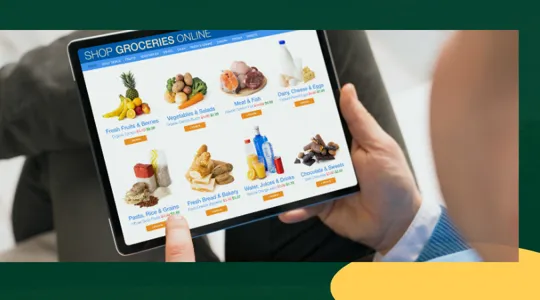
If you can’t resist buying that extra item that looks good, don’t go to the grocery store. You’ll save money if you shop online. By shopping online, you’ll go through your grocery list and buy only what you need. Use your local store’s curb pickup, and you’ll never be tempted again.
Additionally, shopping online can help manage your grocery budget by allowing you to track your spending and avoid impulse purchases.
2. Stay on the Outer Aisles
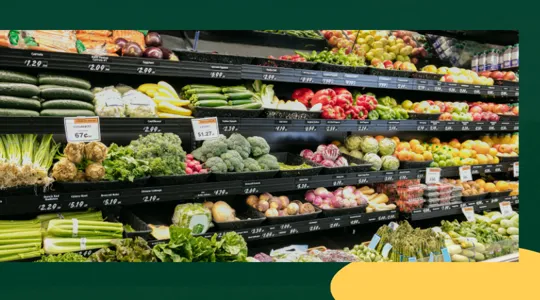
Stay on the outer part of the store. The outer part of the store is where you can find fresh fruits and vegetables. Don’t go up the middle aisles if you can help it. The expensive items are usually located in the middle of the store. If you avoid that area, it will save your budget and your waistline since that’s where the expensive junk food is also located.
3. Check the Unit Price

Check the unit price of each product and compare it to other brands to better understand food prices. Also, check the unit price of the same brands for small and large items. Just because it’s a big package of cereal doesn’t mean it has a lower unit price than a small one.
4. Eat Before Shopping to Stick to Your Grocery Budget

Make sure you have a full stomach before you go grocery shopping. If you’re hungry everything looks too good to pass up. You’ll end up with items in your cart you wouldn’t normally purchase. This will only inflate your grocery bill. Additionally, having a meal plan can help you avoid impulse buys by sticking to a predetermined list.
5. Be Aware of Shrinkflation

Food manufacturers are sneaky. Many of them didn’t raise prices on their products; they just made the portions smaller. You might have noticed that double-stuff Oreos aren’t so double anymore. Or maybe you’ve found that a jar of peanut butter doesn’t last as long. That’s shrinkflation. When comparing prices, double-check that you’re really getting what you want. A cheaper price may be the more expensive one. Being aware of shrinkflation can help manage your food budget by ensuring you get the best value for your money.
6. Take a Calculator
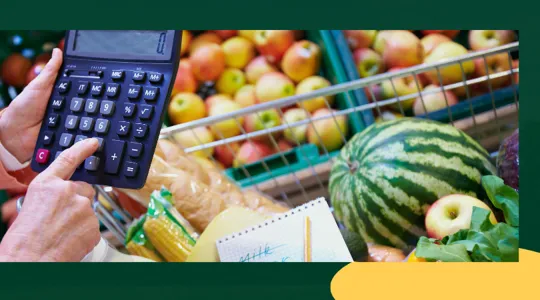
Take a calculator or use the one on your phone. But keep a running total of everything you’re throwing in the cart. If you see how it’s adding up as you go, you might think a little harder before you pick up an item. This is a way to pace your spending. Keeping a running total can also help you avoid wasting money by being more mindful of your purchases.
7. Pay with Cash

Take cash to go grocery shopping. That way, you’ll only spend what you have. Using a debit or credit card makes you more apt to go over budget. Use that calculator you brought and keep track so you won’t be tempted to pull out a debit card when you get to the register. Remember to figure in cash when shopping. That’s part of the grocery budget, too.
8. Buy Frozen Vegetables and Frozen Fruit
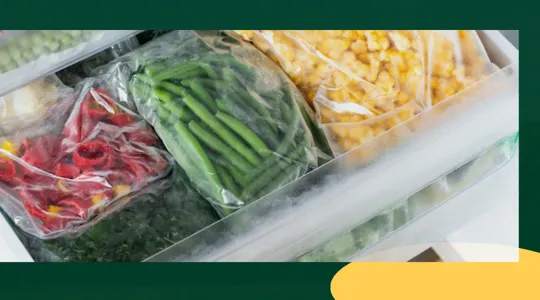
Frozen vegetables and fruit are less expensive and hold up better than fresh produce. They are just as healthy as fresh because they are frozen immediately after harvest. Keep in mind that fresh produce is in shipping for weeks and loses its nutrients as a result. Frozen vegetables and fruit retain their nutrients, plus the freezing process kills harmful bacteria. Save money and buy frozen you’ll still eat healthy. Additionally, frozen vegetables and fruit can be easily incorporated into various meal ideas, helping you save money, reduce food waste, and avoid last-minute, unplanned grocery store trips.
9. Watch Out for "Eye-Level" Groceries

When walking down an aisle, avoid buying items at eye level. The old adage “eye level is buy level” is true. Because it’s so convenient, you’ll be tempted just to pick up that eye-level item. The less expensive items are placed on the bottom or top shelf. Look up and down the shelves, and you’ll find a product that’s easier on the wallet and helps manage your grocery spending.
10. Don't Buy at the Convenience Store

One way to save money at the grocery store is to avoid it when you only need one item. If you need milk, go to a convenience store. You’ll probably only buy the milk then leave. If you go to a grocery store, you’re more apt to see something else you want. That’s why grocery stores put the milk at the back of the store; to encourage more shopping.
You might pay a few more cents for the milk at the convenience store, but you’ll save the dollars you would have spent at the grocery store. This strategy can also help manage your monthly spending by minimizing unnecessary purchases.
11. Don’t Fall for Grouping

Grocery stores will group items that complement each other to persuade you to purchase all of them—for example, having a display with a cake mix, canned frosting and cupcake holders. On the spur of the moment, you’ll think, why not make cupcakes? You’ve just fallen for grouping. That’s why, in the chip aisle, you’ll see salsa and other dips. The store wants you to buy in groups. Be aware of it, and don’t inflate your bill with items you don’t need. Avoiding grouped items can help you avoid buying additional grocery items that you likely already have in your pantry, refrigerator, and freezer.
12. Buy Generic, Store Brands That Cost Less
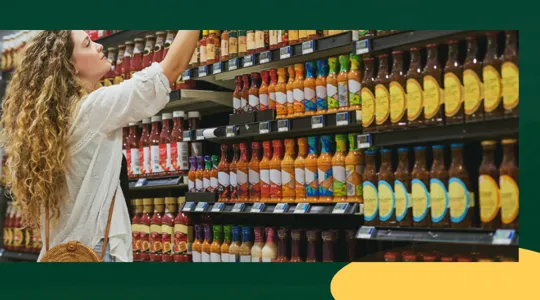
Store brands can cost as much as 20 to 25 percent less than name brands. Many grocery stores have them, as well as discount stores. Usually, the only difference between a store brand and a name brand is the fancy advertising. Name brands need to pay for all those commercials, and it comes out of your pocket. Additionally, buying from local farmers at a farmers market can also be a cost-effective option, providing quality products while supporting the community.
Conclusion
You don’t need to make severe changes while grocery shopping, but planning your shopping trip and following these tips will help you save. The other benefit is that you’ll not only save but also eat healthier. Additionally, shopping at farmers markets supports local farmers and allows you to buy fresh, seasonal produce at good deals. Reducing restaurant meals can also help you save money and align with your financial goals.





